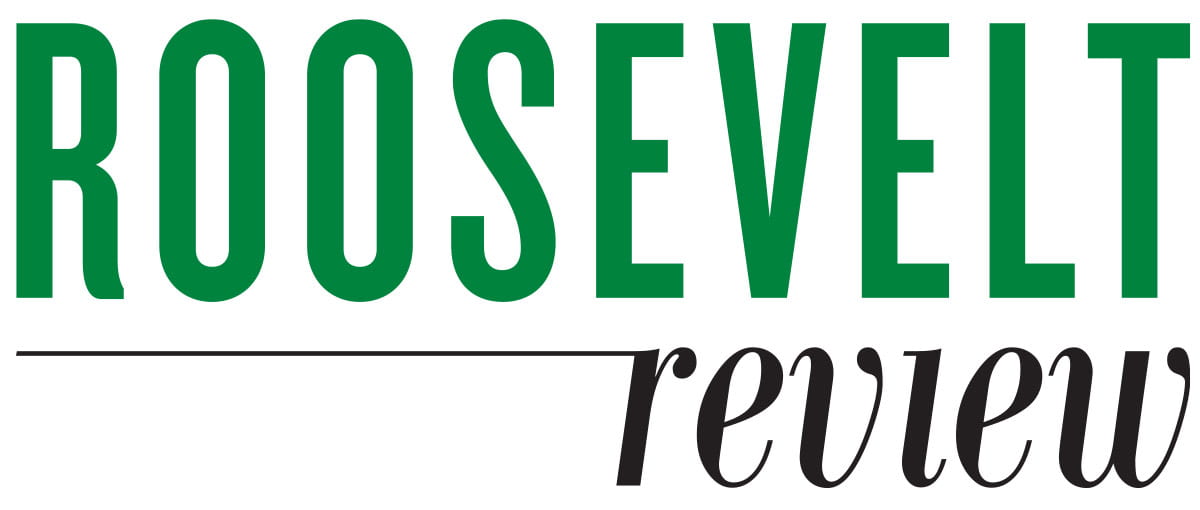Remote Learning in a State of Emergency
Inclusive CommunityLinda Pincham has taught her graduate course, Teaching for Equity and Social Justice, for the last 20 years. Usually, she brings her students on field trips: they visit the National Museum of Mexican Art and take a detour to explore Pilsen, grab lunch and admire the murals.
This summer, her students explored the virtual collection from their laptops, perusing folk art, photographs from the Mexican Revolution, portraits by Diego Rivera.
Pincham is a professor in the Roosevelt University College of Education. The one-week intensive was one of her favorites to teach. During the pandemic, she faced the same dilemma that professors grappled with across the world, as they tried to make their courses meaningful during a state of emergency. “I was losing sleep over how to keep it interesting,” she said. “I felt like teaching this class remotely for one week, nine to five, is going to lose so much of its flavor.”
“I was losing sleep over how to keep it interesting.
I felt like teaching this class remotely for one week, nine to five, is going to lose so much of its flavor.”
— Linda Pincham
Learning in a state of emergency
Many Roosevelt University faculty members are seasoned online learning experts, but the pandemic is anything but learning as usual.
COVID-19 has created profound challenges for students. It’s daunting to figure out your professor’s expectations as a first-year student, especially when you’re navigating classes remotely. Students living at home have to compete with their families for bandwidth or private workspace. Others are dealing with job losses and health problems.
Pincham said that she and her colleagues are not lecturers — “we like to do things that are hands on and practical.” For her class to be worthwhile, it needed to speak to the new needs of students.
This fall, she planned two sessions on remote teaching, giving her education students more options to keep their classes interesting and purposeful. During her unit on classroom discipline, her students talked about how to manage a classroom remotely to prepare for the uncertain future of secondary education. “That flavor is missing somewhat,” she said. “I’m trying to bring it back as best I can.”
“That flavor is missing somewhat.
I’m trying to bring it back as best I can.”

In his communications class, Professor Billy Montgomery led a discussion on communicating while wearing masks
Getting creative with online learning
• Roosevelt students met with potential employers like Fox Television Stations and Northwestern Mutual during the virtual career fair this June. Alumni can register for the upcoming December 8 Career Fair by emailing career@roosevelt.edu to set up a Handshake account.
• Professor Bethany Barratt’s summer classes took a socially distanced field trip to the Mariposa Garden.
• 75 faculty members participated in Roosevelt’s Online Teaching Academy to revamp their courses for remote learning.
• The Heller College of Business rolled out its new fully online MBA, now a permanent option. “There’s a real emphasis on rolling up your sleeves and doing the work,” said Dean Ryan Petty. “You get all of the advantages of the flexibility, along with additional support and a sense of community.”
Bringing back the “flavor”
Student evaluations show that hour-long virtual lectures with little engagement can actually harm learning.
“It’s more draining than classes in person because you’re staring at a screen and you’re not physically moving,” said Kathleen Miller, an adjunct professor in the instructional leadership program. “You’re mentally engaged, but you’re not physically doing as much.”
With Zoom breakout rooms, students can work together and share ideas in small groups.
“You have to have structure,” advises Miller. “What are we going to talk about? Who’s going to be the timekeeper? How are we going to share this back to the group?”
In larger classes like her secondary education course, Pincham divides her students into content area groups: English, business, math. Students can still get practice speaking in front of groups, a skill especially crucial to middle and high school teachers. “These groups all know each other almost on an intimate level,” said Pincham.
For five years, Pincham has been using Padlet to make her classes almost paperless. Padlet is a digital wall where students can post videos, submit assignments or review their graded rubrics.
Pincham said she once considered herself a “dinosaur” when it came to technology. Many years ago, she was teaching with an overhead projector, and in the middle of the lesson all of her transparencies fell to the floor. One of her students gently suggested that she use PowerPoint instead.
Since then, she’s made it a priority to play with new tech. Now she’ll share often share new teaching tools that her millennial students have never heard of. “It’s trial and error,” she said. “You have to go for the leap and not be afraid of it.”

How can educators make online learning engaging?
From Academic Technology Solutions.
• Show up. Offer online office hours, timely grading and informal chats.
• Be yourself. Record with video, share your personality and realize that all students aren’t comfortable online.
• Put yourself in your students’ shoes. Give students opportunities to express themselves and empathize.
• Break down complex tasks.
• Make the class inviting and pleasant.
• Commit to continuous improvement.
Creating an online community
One of the most serious obstacles to learning is the sense of isolation. Instead of meeting up with friends to study in Fainman Lounge or swinging by a professor’s office after class, students are doing their work on their own.
The Community of Inquiry framework, developed by D. Randy Garrison, Terry Anderson and Walter Archer of the University of Alberta, examines how learning happens in relationship: between instructors and their students, and students with each other. The Academic Technology solutions team held training throughout the summer and fall to help Roosevelt professors overcome the barriers to strong relationships that exist in online learning.
Instead of rote learning and testing, the Community of Inquiry framework encourages educators to gently challenge their students, to ask them to push their ideas further or explain their thought process. It also focuses on the importance of open communication and emotional expression to a successful learning experience.
Pincham taught her equity and social justice course in the immediate aftermath of George Floyd’s murder. Her course helped her graduate students think what that means in practice to be anti-racist educators.
“We have discussions on sensitive topics, like racism, prejudice and bias,” said Pincham. “I would have icebreakers at the beginning of each session, and I would always be the first one to share. I want them to see that you’re willing to stick your neck out and share. Then the rest of it follows through.”
Silver linings
Pincham tells her classes that every student has a silver lining — it’s only a matter of peeling back the layers. She says the same applies to remote learning.
For educators that have long resisted new teaching methods, Pincham said, the pandemic has made them reconsider how to make their lessons more inviting, more innovative, more exciting.
“The pandemic is forcing us to think outside the box,” she said. “That itself is the silver lining, trying to come up with creative ideas to communicate with your students.”
More in this section
unexcused absence
Some of life’s most important lessons cannot be taught inside the four walls of a classroom. Matthew Beardmore’s travel has forced him to reassess how he thinks about work, family, politics, injustice and many other issues. He’s no longer tied to the beliefs of where he grew up.
traveling while home: self-discovery through the local
How can you make the long trip home if you don’t actually leave there? A partnership between Roosevelt University’s Honors Program and Chicago Architecture Center asks students to experience space and place as sites for action—not simply places we passively inhabit.
creating a new travel niche while wandering the globe
In early 2011, Sahara Rose De Vore bought a one-way ticket to Costa Rica. Over the next 10 years, she explored 84 countries. The self-discovery she experienced inspired her to launch two successful businesses—both helping others discover the benefits of travel.



